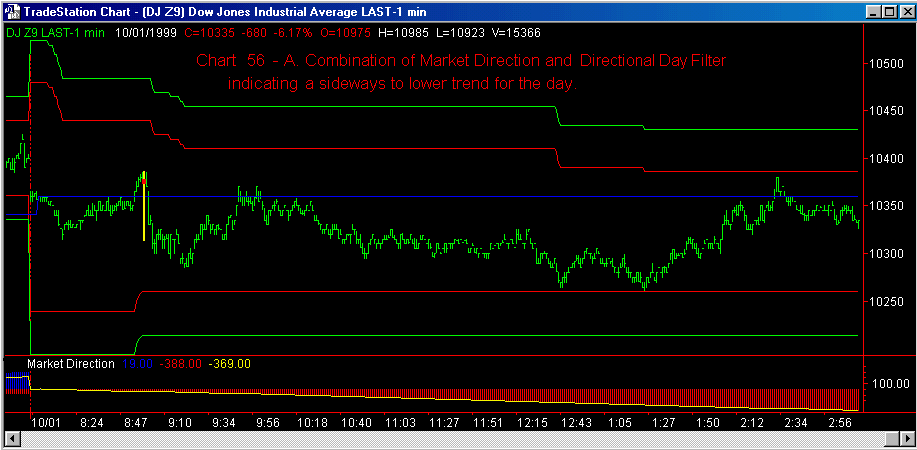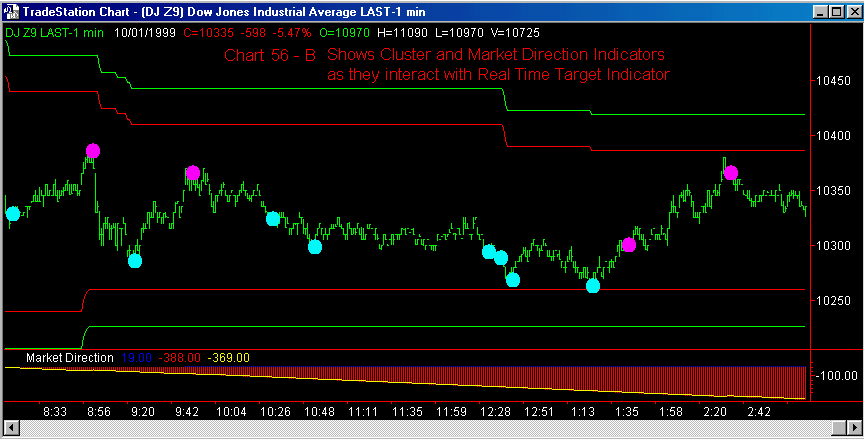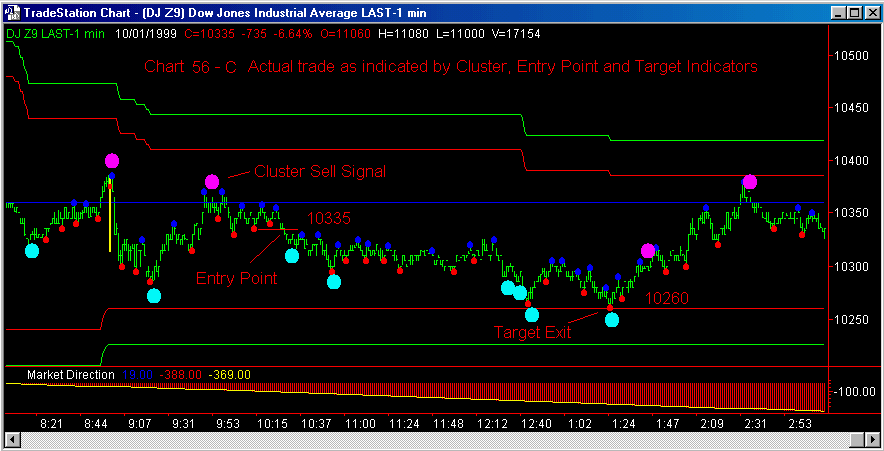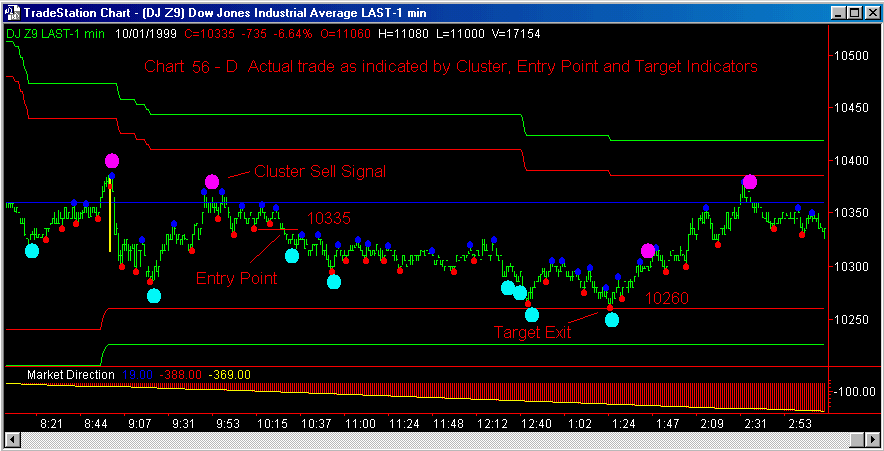|
|
|
|
|
|
Chart 56
JFC Real Time Target Indicator

Chart 56

The chart above adds the market direction and
the Directional Day Filter indicators to the chart used in the video. This is a one
minute chart of the same day as the five minute chart which was displayed
on the video.
During the video presentation reference is
made to the direction of the market being determined as sideways to lower
for the day. This chart graphically demonstrates the plots of these two
indicators.
Note that the Directional Day Filter has a close of the Signal Bar above the horizontal blue line but has the majority of the activity below the line, indicating a sideways day for the rest of the session. Also note that the Market Direction Indicator is indicating a declining market is expected. The combined interpretation of the two indicators is therefore fore a sideways (Directional Day Filter) to lower (market direction) day.
Also of interest is the activity of the market when it rallies back to the Directional Day Filter between 9:34 and 9:56. Note how the market respects the resistance as formed by the Directional Day Filter and heads lower for the next three hours.
Note that after the early (9:00 am central time) designation of a sideways to lower day that the lower target point is reached at 1:20 pm, providing an excellent exit point for our short trade which would have been taken in the direction of the trend for the day.

The chart above is the exact day and time as the chart displayed on the video. This one, however, is set to a one minute time frame to more accurately display the interaction of two of our timing indicators, the JFC Cluster and the JFC Market Direction. Note the selling opportunities identified by the cluster indicator when combined with the market direction indicator.
For a detailed explanation of an actual trade generated by the above indicators in combination with the JFC entry Point indiator go to Chart 56 - D.

There are several methods by which trades can be generated by this
indicator package. Chart 56 - C illustrates the use of the Cluster
Volatility Stop to both enter a trade and place a trailing stop behind
the trade to protect profits.
Trades are entered when the Cluster indicator issues a buy
or sell order. The trailing stop location
is marked by the broken line which extends to the right of the buy or sell
point.
Recall that we are only taking sell signals here until the lower
target is reached. All buy signals up until this point are ignored.
The first sell signal is stopped out for a break even trade. The second
registers as modest profit, as does the long signal generated when the
market finds support at the lower target.
An alternate method of trading this day is described in the chart
below.

With the major trend being defined as sideways - lower after 9:00 am, we will be looking only to the short side today. The second Cluster Sell Signal (marked above) represents our first reasonable sell signal as the first cluster sell came at the signal bar, which is a bit early.
Now that we have defined a selling window using the cluster indicator, we look to the JFC Entry Point indicator to define an exact entry point, marked on the chart above. Recall that the entry point indicator requires several bars of data to calculate, therefore making the next, slightly higher point unavailable since it would not be on the chart until a bar or two later than our entry point.
By placing a sell stop order at the level designated by the entry point indicator we are automatically entered into a short position when the market trades through our stop order. The result of this activity is a new short position at the 10335 level.
Note that the market gradually drifts lower, respecting both the major and minor trends of the day as defined by our indicators.
Our short position is then exited at the target price of 10260 for a 75 point profit. In the Dow Futures, valued at $10.00 per point, this trade turns a profit of $750.00 before commissions and slippage.